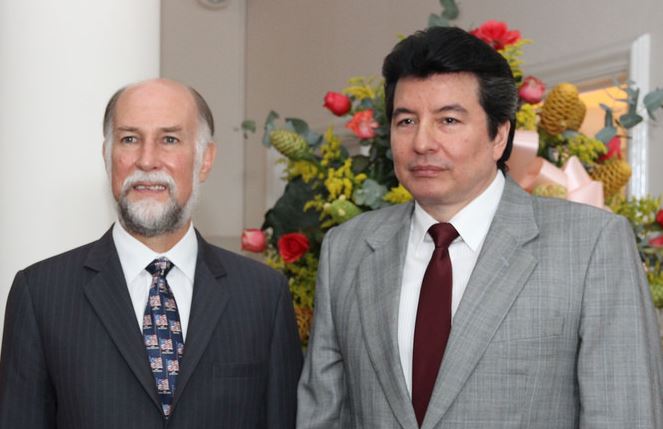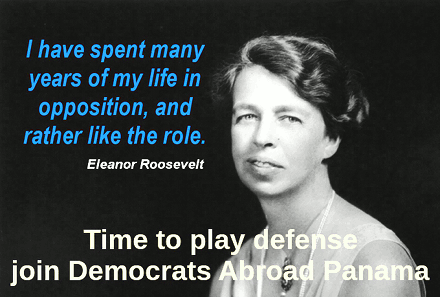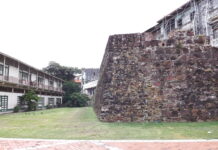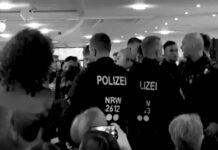
Patterns of crime and impunity
by Eric Jackson
Evidence of a consistent pattern of conduct relevant to serious violations of international humanitarian law under the Statute may be admissible in the interests of justice.
Rules of evidence, international courts for the
former Yugoslavia, Rwanda and Sierra Leone
How does a political caste that embraces all branches of government, which has been caught red-handed at severe and systemic corruption, get away with it? They may not. But the hope of the guilty who want to go unpenalized is that by way of a long-running pantomime act, the impression of exhaustive investigations that lead nowhere will leave the public exhausted and bored with the story. Then the guilty will say that it’s “old news” and that nothing was ever proven, so nothing ever happened.
The problem is that in the course of that repetitive mime show certain patterns become consistent, and certain facts come out in each show, to the point that it’s hard for any serious observer to be fooled. But in corrupted courts everywhere, the dismissal of such patterns and their exclusion as proof is common. Defense counsel and biased judges will dismiss damning facts as just isolated coincidences that don’t really mean anything. “It’s just circumstantial evidence,” is one typical dismissive response, even though many of the strongest criminal cases are based on circumstances rather than the testimony of witnesses to the crime.
A pattern of impunity: the Panamanian people are told that a situation will be thoroughly audited or investigated, but it ends up that the probe is only partial, leaving out times and persons when the only reason to do so is for political convenience.
Did Comptroller General Federico Humbert tell us that he was going to audit all of the Odebrecht contracts? He hasn’t done so with respect to those contracts that bear his own signature of approval. He hasn’t done that with respect to contracts that implicate President Varela or Metro Secretary and Canal Affairs Minister Roberto Roy. He hasn’t gone back into the contracts of the Torrijos administration.
Now, however, we are treated to an audit of five contracts that were awarded by the Martinelli administration on one day, March 29 of 2011, all of them having had bidding on February 11 of that year. Only two of these, the Cinta Costera III and some historical preservation work in Panama City, were Odebrecht contracts. The road from where Tumba Muerto crosses the Transistmica and becomes Avenida Domingo Díaz — or more commonly the road to Tocumen Airport — was a contract with a consortium including Mexico’s ICA and Costa Rica’s Constructora Meco, while the other two were parts of the Via Brazil makeover that was done by Spain’s FCC.
The audit of the five contracts found a consistent pattern of serious overcharges. Consultations with specialists from Panama Technological University, the Chamber of Construction, the Chamber of Commerce and the Panamanian Business Executives Association agreed, compared what was paid to the market value of similar work elsewhere, and pegged the overcharges at between 13.7 percent for the Cinta Costera III and 29.5 percent for one part of the Via Brazil work. All told these five contracts that were made on one day involved more than $318 million in overcharges, some 18.4 percent more than should have been paid.
Are we told that the pattern in the FCC and ICA/Meco contracts followed the pattern shown in worldwide revelations about Odebrecht overcharges? Should we take less notice of that than the downplayed accompanying announcement that Humbert’s audits of Odebrecht are concluded?
Yes, the comptroller general has sent his results to the attorney general, who so far has not been getting many convictions for the five years of in-our-faces corruption by the Martinelli administration. Former President Martinelli, hiding out in his posh Miami condo, has media in which he acquired controlling interests in deals financed by government advertising that will tell you that there are no convictions because there were no crimes.
And what about the more than a dozen criminal cases against the ex-president that are percolating in the high court? There, too, we have a pattern of impunity. Only cases falling outside the specific provisions of the 1904 US-Panamanian extradition treaty have come to the point of arrest warrants being issued. US authorities — who have their own long-running pattern of conduct that allows wealthy Third World thug politicians refuge in the United States if they bring a long of money to stash in US banks — have the perfect excuses to ignore the INTERPOL red notices. Notwithstanding that, Washington always has the option to tell an unsavory former foreign head of state to get out. Speculation is rife about why neither former President Obama nor current President Trump has done this with respect to Martinelli. There is no transparency about such matters so those who talk hardly ever know.
Are any Panamanians fooled? Polls suggest few if any are. In Dichter & Neira’s mid-April poll, 81 percent of Panamanians said that there was little or no government transparency. By a margin of 72 to 18 percent those polled were against the recent Supreme Court decision not to investigate legislators who by all appearances stole from funds meant to be spent on public projects in their circuits. About the only thing that most Panamanians believe in is soccer — and some of the former leading lights of Panama’s FEPAFUT soccer federation are facing trial for corruption.
You never know when some incident might set off a social explosion with far-reaching political implications but those things are rare. And then if you look at the global pattern of Odebrecht bribery, that company paid off not only those in power who have the ability to steer contracts, but also those not even close to power whom might have the power to raise hell about such contracts. Were the usual radical suspects here also paid off? We should not be surprised if they were.
The more usual post-invasion political pattern in Panama is that in two years’ time President Varela’s Panameñista Party loses the presidential palace and many or most legislators lose their jobs. The political parties and various politicians are busy trying to tweak that pattern — there are already billboards up on the Pan-American Highway for various 2019 presidential candidates — but the basic result is likely to be in line with an established pattern.
~ ~ ~
These announcements are interactive. Click on them for more information.










